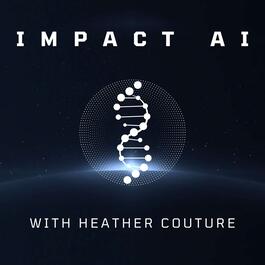
Foundation Model Series: Accelerating Radiology with Robert Bakos from HOPPR
Imagine a world where radiology backlogs are a thing of the past, and AI seamlessly augments the expertise of radiologists. Today, I'm joined by Robert Bakos, Co-Founder and CTO of HOPPR, to discuss how his company is bringing this vision to life. HOPPR is pioneering foundation models for medical imaging that have the potential to transform healthcare. With access to over 15 million diverse imaging studies, HOPPR is developing multimodal AI models that tackle radiology’s most significant challenges: high imaging volumes, limited specialist availability, and the growing demand for rapid, accurate diagnostics. In this episode, Robert offers insight into the rigorous process of training these models on complex data while ensuring they integrate seamlessly into medical workflows. From data partnerships to specialized clinical collaboration, HOPPR’s approach sets new standards in healthcare AI. To discover how foundation models like these are revolutionizing radiology and making healthcare more efficient, accessible, and equitable, be sure to tune in today! Key Points:Robert’s background in medical imaging and tech and how it led him to create HOPPR.Ways that HOPPR’s AI models improve diagnostic speed and accuracy.The significant data and compute resources required to build a foundation model like this.Partnering with imaging organizations to collect diverse data across multiple modalities.How HOPPR differentiates itself with ISO-compliant development and multimodal training.The quantitative metrics and clinical review involved in validating its foundation model.Key challenges in building this model include data access, diversity, and secure handling.Reasons that proper data diversity and balance are essential to reduce model bias.How API integration makes HOPPR’s models easy to adopt into existing workflows.The real-world clinical needs and input that go into building an AI product roadmap.Robert’s take on what the future of foundation models for medical imaging looks like.Valuable lessons on the importance of strong labeling, compute scalability, and more.Practical, real-world advice for other leaders of AI-powered startups.The broader impact in healthcare that HOPPR aims to make. Quotes: “Having clinical collaboration is super important. At HOPPR, our clinicians are an important part of our product development team – They're absolutely vital for helping us evaluate the performance of the model.” — Robert Bakos “Because we are training across all these different modalities, getting access to this data can be challenging. Having great partnerships is critical for finding success in this space.” — Robert Bakos “Make sure that you're addressing real problems. There are a lot of great ideas and cool things you can implement with AI, but at the end of the day, you want to make sure you can deliver value to your customers.” — Robert Bakos “Foundation models – trained on a breadth of data – can make a positive impact on underserved areas around the world. With the volume of images growing so rapidly, constraints on radiologists, and burnout, it's important to leverage these models to make a big impact.” — Robert Bakos Links: Robert Bakos HOPPR Robert Bakos on LinkedIn Resources for Computer Vision Teams: LinkedIn – Connect with Heather. Computer Vision Insights Newsletter – A biweekly newsletter to help bring the latest machine learning and computer vision research to applications in people and planetary health. Computer Vision Strategy Session – Not sure how to advance your computer vision project? Get unstuck with a clear set of next steps. Schedule a 1 hour strategy session now to advance your project.
From "Impact AI"


Comments
Add comment Feedback